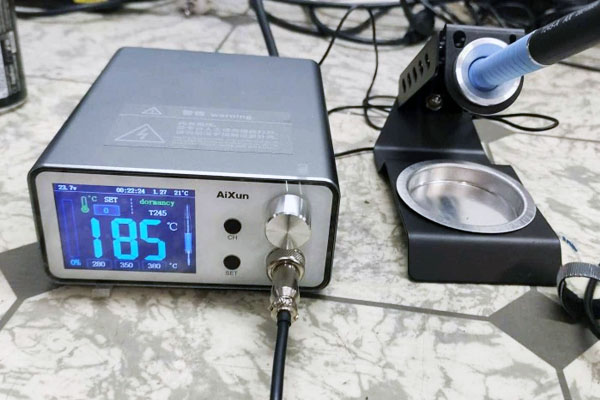
As an electrician, the tools of the electric soldering iron must be familiar to everyone-the electric soldering iron needs to complete the tinning process in the process of repairing electronic circuits and copper wire joints.

With the advancement of processing and production technology, temperature-regulated electric soldering irons and temperature-regulated soldering stations that can set heating temperature parameters (such as the most common AiXun soldering station) are becoming more and more popular. With these electric soldering irons with constant temperature function, we can complete the calibration of temperature control instruments. Likewise, proper performance of temperature sensors such as thermistors and thermocouples can be verified.
The soldering station may or may not need to be calibrated. It depends on the work being done and the "impact" on quality. In fact, it's hard to think of a soldering station as a measuring or monitoring device. However, if it's important to your product, it can be addressed with a maintenance program or otherwise.
Let's understand what the term "calibration" means.
Soldering station calibration is a certification process commonly performed to ensure that the actual temperature measured at the soldering tip is within a specified tolerance of the product's set or "reference" temperature. This is also a verification that the tip-to-ground potential and the tip-to-ground resistance are within specified limits.
Some devices that can be maintained in low cost, and a good estimate can be made without such devices with a suitable K thermocouple and DMM.
So, a side question is, does the exact temperature setting actually help your soldering, or can you simply use a fast heating iron and use a variable temperature to ensure that any solder used flows from tiny spots , like SMT pads to large areas, eg >20 AWG wire.. and don't care what the actual temperature is?
While changing the shape of the tip has little effect on the accuracy of the tip temperature, changing the heating source (heating element or cartridge) may have a greater effect. This is where the calibration process becomes important.
The best soldering station is built in such a way that the variation in closed-loop temperature control and drift in system accuracy over time is relatively small. Once set well, the accuracy of the iron temperature is very good, even when the tip is changed to a different shaped tip.
If you feel that your soldering station is not performing as well as it should, we recommend calibrating your equipment and making any necessary adjustments. Remember that you must do this whenever you change the heating element, handpiece, or replace the tip.
One question that comes to mind when considering soldering irons and soldering stations is how often should you calibrate?
AiXun does not determine the frequency of this verification as it depends on your own process control and past results. Many times, soldering is mostly done by "feeling". Therefore, this certification process is mainly done at the request of the customer rather than the request of the soldering station manufacturer.
AiXun smart soldering station adopts new high-efficiency soldering system. The processor programming and circuit design in these particular systems allow self-compensate for any predictable drift in component characteristics. This self-compensation is carried out continuously under the control of the microprocessor.
Small variations in tip heating element placement are also considered while accounting for changes in tip thermal properties due to surface area and mass. This technology allow precise control over the heating element characteristics, tip design and embedding process during the manufacturing process.
Due to the design, AiXun soldering stations do not require calibration.
Welcome to explore the AiXun website and choosing the suitable product for you! Any questions or inquiry, feel free to contact us.
 WhatsApp
WhatsApp